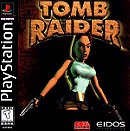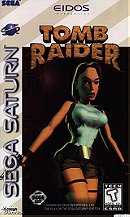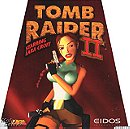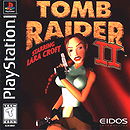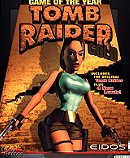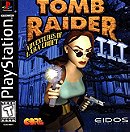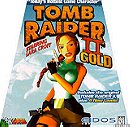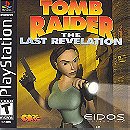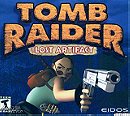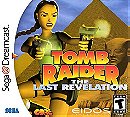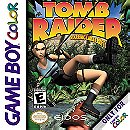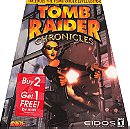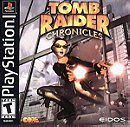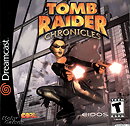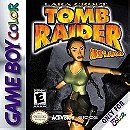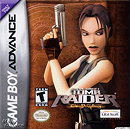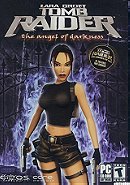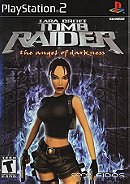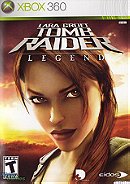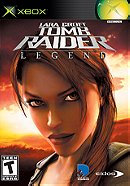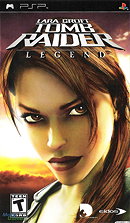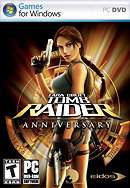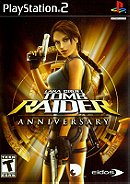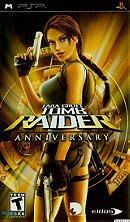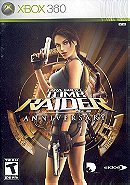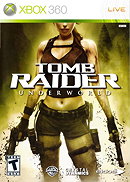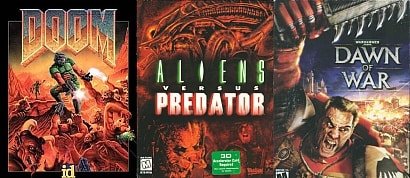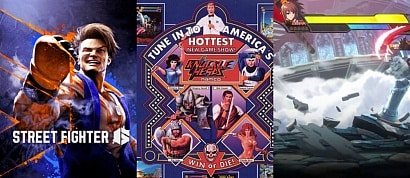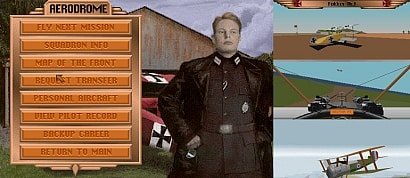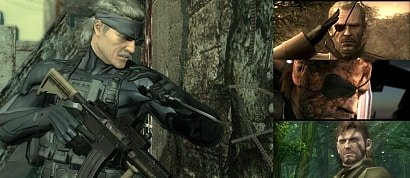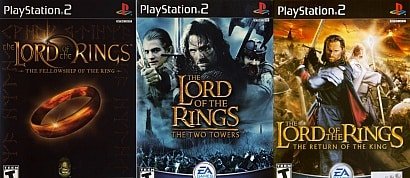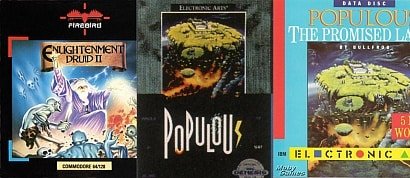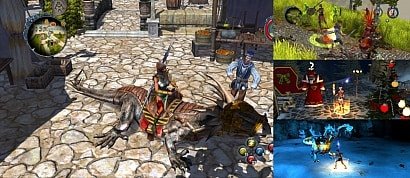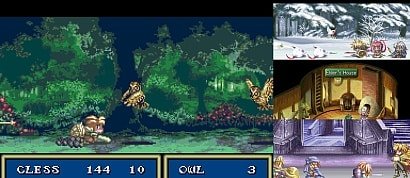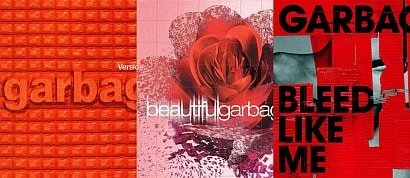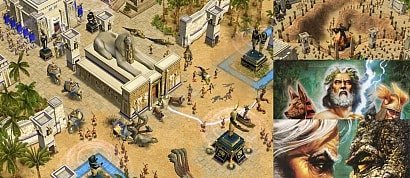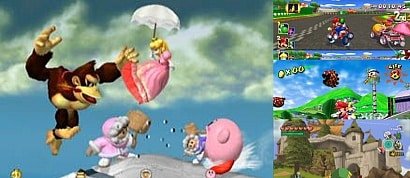Tomb Raider series
Sort by:
Showing 39 items
Rating:
List Type:
Tomb Raider - PC Games
Release: 1996

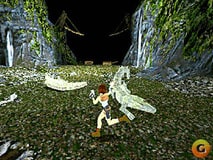
Tomb Raider is a video game developed by Core Design and published by Eidos Interactive. It was originally released for MS-DOS, PlayStation, and Sega Saturn. Tomb Raider follows the exploits of Lara Croft, an English female archaeologist in search of ancient treasures à la Indiana Jones. The game was critically acclaimed and widely influential. It spawned a number of sequels and a movie franchise.


Tomb Raider is a video game developed by Core Design and published by Eidos Interactive. It was originally released for MS-DOS, PlayStation, and Sega Saturn. Tomb Raider follows the exploits of Lara Croft, an English female archaeologist in search of ancient treasures à la Indiana Jones. The game was critically acclaimed and widely influential. It spawned a number of sequels and a movie franchise.
List-All's rating:


Tomb Raider - PlayStation
Tomb Raider was crafted by Core Design of Europe, who took 18 months to develop it. When Core decided that puzzles and stealth should be more important to the game than action, they found that these requirements better suited a female character than a classic male action hero.
 Lara's famous breast size was in actuality brought about by accident. Toby Gard, Lara Croft's creator, was adjusting the model when he accidentally blew up Lara's bosom to 150% of what he intended it to be. As he was resizing it back to normal, the other designers saw what he was working on and told him they loved it.
Lara's famous breast size was in actuality brought about by accident. Toby Gard, Lara Croft's creator, was adjusting the model when he accidentally blew up Lara's bosom to 150% of what he intended it to be. As he was resizing it back to normal, the other designers saw what he was working on and told him they loved it.
 Lara's famous breast size was in actuality brought about by accident. Toby Gard, Lara Croft's creator, was adjusting the model when he accidentally blew up Lara's bosom to 150% of what he intended it to be. As he was resizing it back to normal, the other designers saw what he was working on and told him they loved it.
Lara's famous breast size was in actuality brought about by accident. Toby Gard, Lara Croft's creator, was adjusting the model when he accidentally blew up Lara's bosom to 150% of what he intended it to be. As he was resizing it back to normal, the other designers saw what he was working on and told him they loved it.
List-All's rating:


Tomb Raider - Sega Saturn
Though originally developed primarily for the Sega Saturn, it was the PlayStation version which became the top seller, and as an early title, helped fuel the PlayStation's popularity in the console war.
Tomb Raider II - PC Games
Release: 1997


Tomb Raider II was developed by Core Design for the PC and PlayStation. In terms of gameplay, Lara can now climb walls and perform mid-air rolls. New weapons include a harpoon gun, a grenade launcher and an M16 rifle. Lara can also use pyrotechnic flares, used to take advantage of the improved lighting effects in this game. Two vehicles are also found in the game; a motorboat and a snowmobile.


Tomb Raider II was developed by Core Design for the PC and PlayStation. In terms of gameplay, Lara can now climb walls and perform mid-air rolls. New weapons include a harpoon gun, a grenade launcher and an M16 rifle. Lara can also use pyrotechnic flares, used to take advantage of the improved lighting effects in this game. Two vehicles are also found in the game; a motorboat and a snowmobile.
Tomb Raider II: Starring Lara Croft - PlayStation
 Development of Tomb Raider II was underway before the first game was released, but two key members of the team had left – most notably Lara's creator Toby Gard, who was replaced by Stuart Atkinson. But with an increased budget, the team was expanded and took a shorter amount of time to develop, also helped by the re-use of the same Tomb Raider engine. Lara's appearance was given a make-over by the new designer, giving her a free-flowing pony tail, a smoother appearance, and several new outfits.
Development of Tomb Raider II was underway before the first game was released, but two key members of the team had left – most notably Lara's creator Toby Gard, who was replaced by Stuart Atkinson. But with an increased budget, the team was expanded and took a shorter amount of time to develop, also helped by the re-use of the same Tomb Raider engine. Lara's appearance was given a make-over by the new designer, giving her a free-flowing pony tail, a smoother appearance, and several new outfits.
Tomb Raider Gold - PC Games
In 1998, shortly after Tomb Raider II, Tomb Raider was re-released for the PC market, featuring the original Tomb Raider with four new bonus levels. These levels were also free to download for owners of the original game.
European/UK version, titled 'Unfinished Business'
European/UK version, titled 'Unfinished Business'
Tomb Raider III: Adventures of Lara Croft - PC Games
Release: 1998


Tomb Raider III: Adventures of Lara Croft is the third game in the Tomb Raider series, developed by Core Design and published by Eidos Interactive for the PC and PlayStation.
The storyline follows Lara Croft as she embarks upon a quest to recover 4 meteorite stones scattered across the world.


Tomb Raider III: Adventures of Lara Croft is the third game in the Tomb Raider series, developed by Core Design and published by Eidos Interactive for the PC and PlayStation.
The storyline follows Lara Croft as she embarks upon a quest to recover 4 meteorite stones scattered across the world.
Tomb Raider III: The Adventures of Lara Croft... - PlayStation
 The gameplay of Tomb Raider III picks up where Tomb Raider II left off. Once again, Lara's range of abilities has been expanded, now including such moves as the crouch stance, crawling, a sprinting move and the ability to "monkey swing" on overhead bars and vines. Also, a sprinting feature allows Lara to gain a burst of speed while running, until her stamina bar is used up.
The gameplay of Tomb Raider III picks up where Tomb Raider II left off. Once again, Lara's range of abilities has been expanded, now including such moves as the crouch stance, crawling, a sprinting move and the ability to "monkey swing" on overhead bars and vines. Also, a sprinting feature allows Lara to gain a burst of speed while running, until her stamina bar is used up.
Tomb Raider II Gold - PC Games
Released in 1999, Tomb Raider II Gold contains Tomb Raider II together with an extra set of levels, similar to the first 'Gold' edition. Owners of Tomb Raider II could also download these new levels free of charge.
European/UK version, titled 'The Golden Mask'
European/UK version, titled 'The Golden Mask'
Tomb Raider IV: The Last Revelation - PC Games
Release: 1999


Tomb Raider: The Last Revelation is the fourth game in the Tomb Raider series. It was developed by Core Design and published by Eidos Interactive. It was released on PC, PlayStation and eventually to the Sega Dreamcast with special graphic and sound enhancements.
Widely considered to be the best of the Tomb Raider sequels by fans and critics, The Last Revelation was praised for its more dynamic and central plot and that explorable levels were reverted to tombs and temples once more.


Tomb Raider: The Last Revelation is the fourth game in the Tomb Raider series. It was developed by Core Design and published by Eidos Interactive. It was released on PC, PlayStation and eventually to the Sega Dreamcast with special graphic and sound enhancements.
Widely considered to be the best of the Tomb Raider sequels by fans and critics, The Last Revelation was praised for its more dynamic and central plot and that explorable levels were reverted to tombs and temples once more.
Tomb Raider IV: The Last Revelation - PlayStation
 The critical response was somewhat mixed with gaming review sites such as GameSpot saying: "The Last Revelation is far and away the best of the sequels", while other critics complained how the game's mechanics remained practically untouched, along with what some felt was frustrating camera positioning and similar graphics engine. The ending was also criticized, as some felt the game implied that Lara Croft dies in the last scene.
The critical response was somewhat mixed with gaming review sites such as GameSpot saying: "The Last Revelation is far and away the best of the sequels", while other critics complained how the game's mechanics remained practically untouched, along with what some felt was frustrating camera positioning and similar graphics engine. The ending was also criticized, as some felt the game implied that Lara Croft dies in the last scene.
Tomb Raider: The Lost Artifact - PC Games
Released in 2000, 'The Lost Artifact' is a PC mini-sequel to Tomb Raider III, sometimes unofficially called Tomb Raider III Gold. Unlike the other two gold editions, this one was sold as a standalone product rather than as a re-release, and was not available as a free download for existing owners.
Tomb Raider IV: The Last Revelation - Sega Dreamcast
The Sega Dreamcast version of 'The Last Revelation', released in 2000, had exclusive graphical and sound enhancements over the original PlayStation version.
Duplicate - PC Games
Tomb Raider starring Lara Croft - Game Boy Color
In 2000, the first portable Tomb Raider title was released. It was also the first in the series to be rated E ESRB.
Tomb Raider: Chronicles - PC Games
Release: 2000


Tomb Raider Chronicles, the fifth game in the Tomb Raider series, was developed by Core Design and published by Eidos Interactive. The game was originally released for PC, PlayStation, and Sega Dreamcast.
'Tomb Raider: Chronicles' opens just days after the events of The Last Revelation, with Lara still missing and presumed dead.


Tomb Raider Chronicles, the fifth game in the Tomb Raider series, was developed by Core Design and published by Eidos Interactive. The game was originally released for PC, PlayStation, and Sega Dreamcast.
'Tomb Raider: Chronicles' opens just days after the events of The Last Revelation, with Lara still missing and presumed dead.
Tomb Raider: Chronicles - PlayStation
The gameplay of Tomb Raider Chronicles is closely tied to that of The Last Revelation. In terms of movement, the only new additions to Lara's skills are the ability to walk on a tightrope, the ability to grab and swing on horizontal bars and the ability to drop from a ledge forwards while crouching.
 Although graphically praised as one of the best installments in the series, the game was subject to numerous criticisms, primarily due to its lack of originality. Many felt the Tomb Raider formula had been stretched to its limits; in addition, the game still used the engine from the original Tomb Raider, which despite tweaking began to show its age.
Although graphically praised as one of the best installments in the series, the game was subject to numerous criticisms, primarily due to its lack of originality. Many felt the Tomb Raider formula had been stretched to its limits; in addition, the game still used the engine from the original Tomb Raider, which despite tweaking began to show its age.
 Although graphically praised as one of the best installments in the series, the game was subject to numerous criticisms, primarily due to its lack of originality. Many felt the Tomb Raider formula had been stretched to its limits; in addition, the game still used the engine from the original Tomb Raider, which despite tweaking began to show its age.
Although graphically praised as one of the best installments in the series, the game was subject to numerous criticisms, primarily due to its lack of originality. Many felt the Tomb Raider formula had been stretched to its limits; in addition, the game still used the engine from the original Tomb Raider, which despite tweaking began to show its age.
Tomb Raider: Curse of the Sword - Game Boy Color
2001's Tomb Raider: Curse of the Sword is a sequel to the first Tomb Raider for the Game Boy Color.
Lara Croft Tomb Raider: The Prophecy - Game Boy Advance
Released in 2001, 'The Prophecy' is considered a sequel to the previous two GBC titles. In this installment, Lara visits Sweden, Cambodia and Italy.
Tomb Raider: The Angel of Darkness - PC Games
Release: 2003


Tomb Raider: The Angel of Darkness is the sixth game in the Tomb Raider series, and was developed by Core Design and published by Eidos Interactive. The game was originally released for PlayStation 2 and PC. The storyline follows Lara Croft as she is hunted across Europe, accused of murdering her former mentor Werner Von Croy.


Tomb Raider: The Angel of Darkness is the sixth game in the Tomb Raider series, and was developed by Core Design and published by Eidos Interactive. The game was originally released for PlayStation 2 and PC. The storyline follows Lara Croft as she is hunted across Europe, accused of murdering her former mentor Werner Von Croy.
Tomb Raider: The Angel of Darkness - PlayStation 2
The highly anticipated sixth Tomb Raider was to be the most ambitious yet, with improved graphics and a new look for Lara coupled with an involving storyline. However, The Angel of Darkness would prove to be the worst-received game in the series. It was heavily criticized for its flaws which included numerous bugs, drastically different controls from previous releases, poor gaming structure, plot holes in the storyline, and lack of actual tombs (majority of the game takes place in urban areas such as a nightclub).
 The amount of criticism the game provoked caused the series' publishers, Eidos Interactive, to dump developers Core Design and go with a new development team, Crystal Dynamics, for future Tomb Raider titles.
The amount of criticism the game provoked caused the series' publishers, Eidos Interactive, to dump developers Core Design and go with a new development team, Crystal Dynamics, for future Tomb Raider titles.
 The amount of criticism the game provoked caused the series' publishers, Eidos Interactive, to dump developers Core Design and go with a new development team, Crystal Dynamics, for future Tomb Raider titles.
The amount of criticism the game provoked caused the series' publishers, Eidos Interactive, to dump developers Core Design and go with a new development team, Crystal Dynamics, for future Tomb Raider titles.
Duplicate - PC Games
Released in 2006, this is the ultimate Tomb Raider collection, containing all six titles from the original Tomb Raider series, all developed by Core Design.
Lara Croft Tomb Raider: Legend - PC Games
Release: April 2006


Lara Croft Tomb Raider: Legend is the seventh game in the Tomb Raider series. Published by Eidos Interactive, this is the first game in the series not to be handled by Core Design, developed instead by Crystal Dynamics. The PS2, Windows, Xbox, and Xbox 360 versions all launched in April, the PSP version in June, and the GameCube, Game Boy Advance and DS versions in November.


Lara Croft Tomb Raider: Legend is the seventh game in the Tomb Raider series. Published by Eidos Interactive, this is the first game in the series not to be handled by Core Design, developed instead by Crystal Dynamics. The PS2, Windows, Xbox, and Xbox 360 versions all launched in April, the PSP version in June, and the GameCube, Game Boy Advance and DS versions in November.
List-All's rating:


Lara Croft Tomb Raider: Legend - Xbox 360
 Tomb Raider: Legend was released to widely positive reviews by the media and from many Lara Croft fans. Many herald it as a tribute to the classic gameplay of the original 1996 Tomb Raider. The game was also a commercial success, leading to a re-envisioning of the original game in Tomb Raider: Anniversary.
Tomb Raider: Legend was released to widely positive reviews by the media and from many Lara Croft fans. Many herald it as a tribute to the classic gameplay of the original 1996 Tomb Raider. The game was also a commercial success, leading to a re-envisioning of the original game in Tomb Raider: Anniversary.
Lara Croft Tomb Raider: Legend - PlayStation 2
Crystal Dynamics, Lara Croft's new developers, wanted to give her "the look of action and athleticism, and retain her beauty and sensuality, but without making her look creepy". They've certainly achieved it with a more muscle-bound heroine - almost cartoon-esque, but still very identifiably Lara.
The original Xbox version does not include the introduction movie with the opening titles. According to Xboxic, the manager of the Xbox development team genuinely forgot to include the intro video on the final build disc when sending it off for the final game testing with Microsoft's Quality Assurance team.
Lara Croft Tomb Raider: Legend - PlayStation Portable
While the textures and polygon count were significantly reduced to run on the portable, some new PSP-exclusive gameplay modes were introduced: Tomb Trials, three multiplayer modes and six additional outfits.
Lara Croft Tomb Raider: Legend - Game Boy Advance
 Despite following the same storyline and levels from the console versions, this release is a 2D sidescroller on the GBA.
Despite following the same storyline and levels from the console versions, this release is a 2D sidescroller on the GBA.
Lara Croft Tomb Raider: Legend - GameCube
The GameCube version has had a couple of cuts, most likely due to disc space. The rolling demos that play while in the title screen have been removed, and the Unfortunate Mishaps video is also missing. The many filters used for explosions and motion blur are also gone, rendering the game with sharper textures but less remarkable explosions. However the game runs at a slightly smoother framerate than the PS2 version, and it also loads faster.
Lara Croft Tomb Raider: Legend - Nintendo DS
The DS edition of Legend takes on more of a 2.5D environment rather than a straight 2D platformer like the GBA version.
Lara Croft Tomb Raider: Anniversary - PC Games
Release: June 2007


Lara Croft Tomb Raider: Anniversary, is the eighth release of the Tomb Raider series. It is a remake of the original Tomb Raider game from 1996, using an improved version of the Legend game engine, and it includes all of the original 'worlds' from Tomb Raider.


Lara Croft Tomb Raider: Anniversary, is the eighth release of the Tomb Raider series. It is a remake of the original Tomb Raider game from 1996, using an improved version of the Legend game engine, and it includes all of the original 'worlds' from Tomb Raider.
Lara Croft: Tomb Raider Anniversary - PlayStation 2
 'Anniversary' is not a true remake of the original Tomb Raider. Crystal Dynamics has rebuilt the game from the ground up, improving on Tomb Raider's visuals, added a good amount of new content, but also removed a great deal of old locales from the original. Overall, the game is shorter and some of the puzzles have been simplified from the 1996 version.
'Anniversary' is not a true remake of the original Tomb Raider. Crystal Dynamics has rebuilt the game from the ground up, improving on Tomb Raider's visuals, added a good amount of new content, but also removed a great deal of old locales from the original. Overall, the game is shorter and some of the puzzles have been simplified from the 1996 version.
Lara Croft: Tomb Raider Anniversary - PlayStation Portable
The PSP version of Tomb Raider: Anniversary suffers from poor controls, due in part to some imprecision with the analog stick. Other minor sacrifices were made, such as using the shoulder buttons to rotate the camera, and the triangle button to reset the camera position. This works well enough most of the time, though during combat it gets frustrating because you have to hold down both shoulder buttons to lock onto an enemy.
Lara Croft Tomb Raider: Anniversary - Xbox 360
 The Xbox 360 version did not arrive until 5 months after its PS2 and PC launch. This version however included higher-resolution textures, improved character models, as well as improved lighting & shadows.
The Xbox 360 version did not arrive until 5 months after its PS2 and PC launch. This version however included higher-resolution textures, improved character models, as well as improved lighting & shadows.
Lara Croft Tomb Raider: Anniversary - Nintendo Wii
 Released a few weeks after the Xbox 360 version, the Wii edition of Tomb Raider: Anniversary had several unique features. Puzzles were added and old ones were updated to take advantage of the Wiimote. New rewards have also been added that require Lara to dig archaeologically using 4 new tools, including charcoal rubbings. Other new features include a Flashlight and a new room in the mansion.
Released a few weeks after the Xbox 360 version, the Wii edition of Tomb Raider: Anniversary had several unique features. Puzzles were added and old ones were updated to take advantage of the Wiimote. New rewards have also been added that require Lara to dig archaeologically using 4 new tools, including charcoal rubbings. Other new features include a Flashlight and a new room in the mansion.
Tomb Raider: Underworld - PC Games
Release: Q4 2008


Tomb Raider: Underworld, is the eighth game in the Tomb Raider series, and the third game to be developed by Crystal Dynamics. It will resume the adventure from where Tomb Raider: Legend left off, and will be set primarily in Southern Mexico, where Lara Croft uncovers portals between her current world and the underworld. Lara may also visit Australia, Easter Island, Rome and the Vatican, Mesopotamia, and the Golden Triangle.


Tomb Raider: Underworld, is the eighth game in the Tomb Raider series, and the third game to be developed by Crystal Dynamics. It will resume the adventure from where Tomb Raider: Legend left off, and will be set primarily in Southern Mexico, where Lara Croft uncovers portals between her current world and the underworld. Lara may also visit Australia, Easter Island, Rome and the Vatican, Mesopotamia, and the Golden Triangle.
Action-adventure exploration games featuring the game icon Lara Croft. The first game appeared in 1996, and seven major games have been released so far, with additional versions for handheld and mobile systems, as well as compilations. Lara and the games' backgrounds have since been adapted into two major Hollywood movies, with Angelina Jolie as the main actress.

Lara Croft: Tomb Raider

Lara Croft Tomb Raider: The Cradle of Life
There are two different continuities to the game series. The first encompassing the first six games, and the second starting with Legend and including Anniversary. Although Anniversary is a remake of the original Tomb Raider, the story has been revised to fit into the second continuity.
The first continuity is often referred to as the Core Design continuity and the second is usually referred to as the Crystal Dynamics continuity, based on the company that developed each game. Differences between the continuities are particularly apparent in Lara Croft’s backstory, as well as her personality. Croft Manor also looks extremely different between the continuities. It could also be stated that there are additional continuities in the Tomb Raider series as the movies and comic books have significant differences from the games.
The movies utilise bits of both continuities; for example, Croft Manor is almost identical to the second continuity, but the backstory follows the first continuity somewhat.
----------------------------
The Evolution of Lara Croft


Original Tomb Raider
-----

Tomb Raider II
-----

Tomb Raider III
-----

Tomb Raider: Last Revelation
-----

Tomb Raider: Chronicles
-----

Tomb Raider: Angel of Darkness
-----

Tomb Raider: Legend
-----

Tomb Raider: Anniversary
-----

Tomb Raider: Underworld
-----------------------
-----------------------
-----------------------
Lara Croft Official Models
* all these models were used by Eidos to
promote the series worldwide

Karima Adebibe

another one Karima, my
fave Lara Croft model

and a third one of Karima...
any complaints? ;)

Lucy Clarkson

Jill de Jong

Lara Weller

Nell McAndrew, fired by Eidos
after appearing nude in Playboy

Rhona Mitra, the first
Lara Croft model

Ellen Rocche

Vanessa Demouy
and of course...

Angelina Jolie

Lara Croft: Tomb Raider

Lara Croft Tomb Raider: The Cradle of Life
There are two different continuities to the game series. The first encompassing the first six games, and the second starting with Legend and including Anniversary. Although Anniversary is a remake of the original Tomb Raider, the story has been revised to fit into the second continuity.
The first continuity is often referred to as the Core Design continuity and the second is usually referred to as the Crystal Dynamics continuity, based on the company that developed each game. Differences between the continuities are particularly apparent in Lara Croft’s backstory, as well as her personality. Croft Manor also looks extremely different between the continuities. It could also be stated that there are additional continuities in the Tomb Raider series as the movies and comic books have significant differences from the games.
The movies utilise bits of both continuities; for example, Croft Manor is almost identical to the second continuity, but the backstory follows the first continuity somewhat.
----------------------------
The Evolution of Lara Croft


Original Tomb Raider
-----

Tomb Raider II
-----

Tomb Raider III
-----

Tomb Raider: Last Revelation
-----

Tomb Raider: Chronicles
-----

Tomb Raider: Angel of Darkness
-----

Tomb Raider: Legend
-----

Tomb Raider: Anniversary
-----

Tomb Raider: Underworld
-----------------------
-----------------------
-----------------------
Lara Croft Official Models
* all these models were used by Eidos to
promote the series worldwide

Karima Adebibe

another one Karima, my
fave Lara Croft model

and a third one of Karima...
any complaints? ;)

Lucy Clarkson

Jill de Jong

Lara Weller

Nell McAndrew, fired by Eidos
after appearing nude in Playboy

Rhona Mitra, the first
Lara Croft model

Ellen Rocche

Vanessa Demouy
and of course...

Angelina Jolie
Added to
28 votes
Game Series of Interest
(199 lists)list by Zozoulini
Published 12 years, 5 months ago  21 comments
21 comments
 21 comments
21 commentsPeople who voted for this also voted for
[Series] The Sims : Console Edition
How low have you sunk?
Pokemon
Resident Evil series
Space Marines
Posters designed by BLT Communications, LLC
2D Fighting Games
WWI Air Combat Flight Simulators
Favourite Villains of Video Games
Missing Body Parts
Favorite Videogame Characters
Animorphs
Middle-Earth Game Series
Changing Seasons
The Works of Peter Molyneux
More lists from List-All
Silent Hill series
Developed by Ascaron
Tales of Phantasia series
Garbage - Discography
Age of Mythology series
Brothers in Arms series
Best selling GameCube Games
 Login
Login
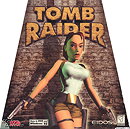
 160
160
 7.5
7.5
 0
0
